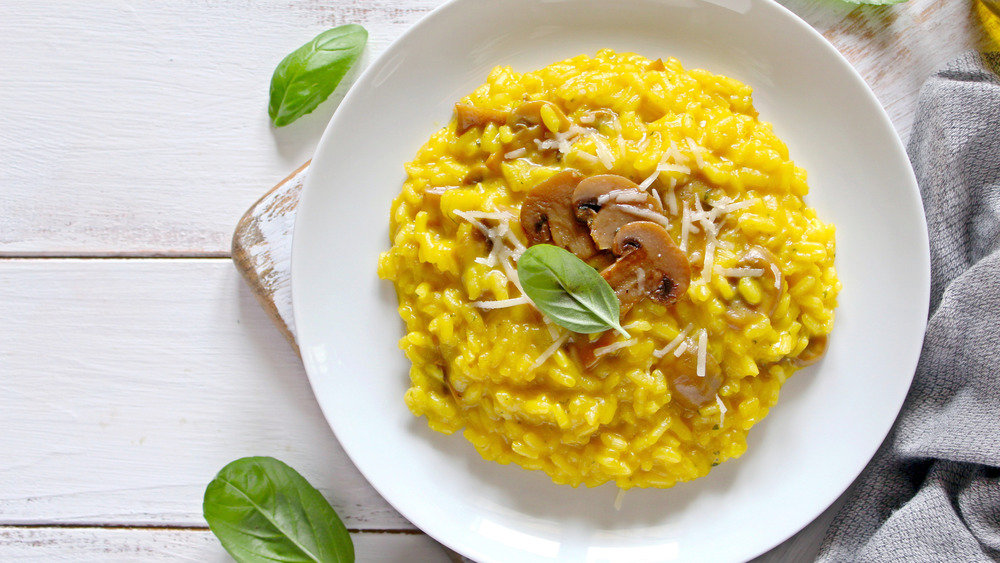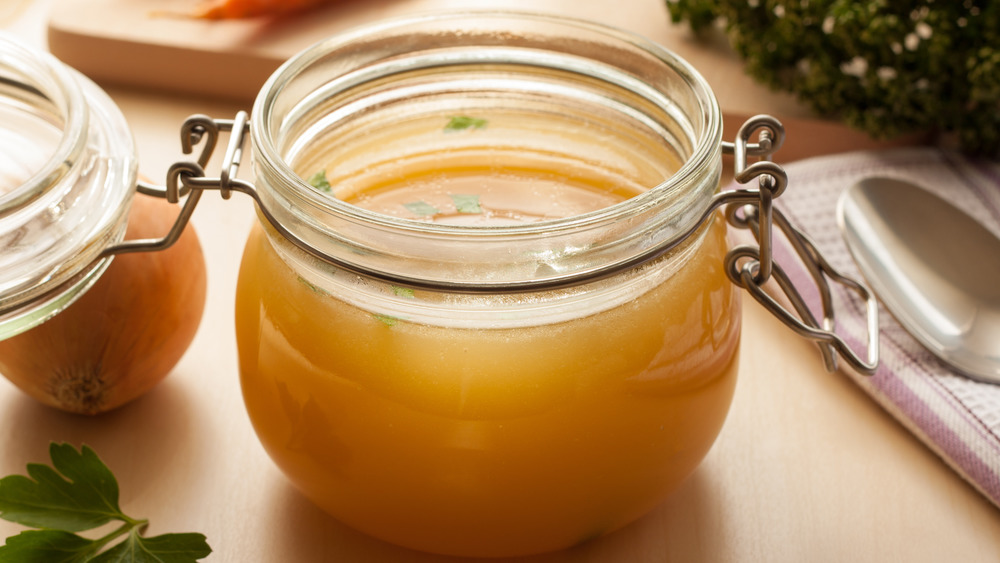J. Kenji López-Alt's Risotto Rule You Should Never Break
Some foods' perfect doneness is so fleeting, you barely have time to snap an Instagram story of them before they fall flat — like a soufflé out of the oven. Or, before they turn cool and sticky, like a spaghetti alla carbonara just minutes after it goes from pan to plate. No dish has a narrower window of perfection than risotto, which can be incredibly creamy and glossy one minute, yet lusterless and sludgy the next. Chef, food writer, and cookbook author J. Kenji López-Alt has a solution: Heat up that risotto plate.
"Hot plate to serve is essential because cool risotto is stodgy," López-Alt explained on Instagram with his video of a "perfect" risotto alla Milanese, the buttery, saffron-flecked rice dish often served with ossobuco in Milan, Italy (via La Cucina Italiana). "Make sure diners are ready," he added, stirring the shiny, intensely colored dish as steam wafted from the pan. "Risotto waits for no one."
How López-Alt makes risotto extra creamy and keeps it that way
We know why J. Kenji López-Alt prefers to serve risotto on a hot plate: Because a cold one would reduce the temperature of the risotto and make it "stodgy," or overly thick, rather than ethereally silky, before you have a chance to take a bite. But how do you make it so silky in the first place? In his Instagram caption, López-Alt said he used Daniel Gritzer's risotto alla Milanese recipe on Serious Eats, calling the result "golden colored, al dente, and just creamy enough to flow like lava."
Gritzer's recipe diverges from traditional risotto recipes, such as one from Food Network, in two main ways. First, he rinses the rice in the chicken stock used to cook the risotto, which he says creates a starchy liquid that results in "a creamier final dish." These surface starches on the rice are usually lost during the toasting phase of risotto-making, he explains, so by rinsing them in the stock, you preserve their thickening capabilities and don't have to stir the risotto as much in order to make it thick. Second, he folds whipped cream into the finished risotto, a non-traditional but effective ingredient that he says "adds an ethereal lightness and creaminess that's hard to top." Try his method for an extra rich risotto — and don't forget to heat up that plate.

